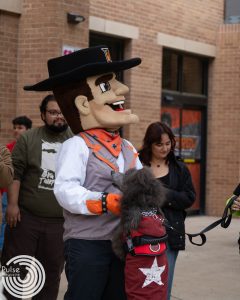UTRGV Committee to Work on Census
As of March 12, the United States Census Bureau has been collecting data for this Census season. The data, regarding household size, is used for school budgets, infrastructure, and health insurances such as Medicaid and Medicare. Keeping count of the population also helps gain representation on a state and federal level to communities such as the Rio Grande Valley.
Ten years ago, the Rio Grande Valley was undercounted, according to Veronica De La Garza, director of governmental relations. She added that the Valley is among the lowest ranked county in the country for responses. As of April 1, 2020, the national response rate is at a 38.4%, leaving the Texas rate at 33.4%, while both Cameron and Hidalgo County are at a 21% self-response rate.
“The Valley was different than what it is now,” De La Garza said on Zoom. “You’re now living the transformation of what was [the University of Texas Pan-American] and [the University of Texas at Brownsville]. We have a school of medicine, we have SpaceX. The number of elementary schools in the last 10 years has blown up, and the need to have more infrastructure. I’m sure driving between Harlingen and Edinburg at a certain time of the day is no fun … this is how census impacts the Valley.”
De La Garza mentioned that the goal of the census is to get an accurate count of how many people live in the Rio Grande Valley. She and Jennifer McGehee-Valdez, director of public relations for the University Marketing and Communications, are a part of the UTRGV Complete Count Committee whose goal is to promote awareness on the census.
Other committee members are Cindy Mata, director for Student Activities, Edna Zambrano, director for the Student Union, Lourdes Servantes, associate director for the Career Center, Volker Quetschke, an associate professor in Physics and Astronomy, Peter-James Ehimkia, program manager for Student Academic Success, Frank Zecca, associate chief information officer for IT Infrastructure, Sergio Martinez, director for Residence Life, Irma Zungia, an administrative assistant for Internal Medicine, Raquel Estrada, acquisition and collection development for the University Library, Alisha Puentes, administrative coordinator for the University Library, and Estela De La Garza, program coordinator for Engaged Scholarship and Learning.
“We were planning a meeting [before the COVID-19 pandemic] to figure out how we were going to make sure our community of students, faculty and staff [are going to be] educated and then make a push to fill it out and then celebrate it,” De La Garza said.
The Complete Count Committee planned an event called “Census Fiesta” to celebrate their work. It was going to take place on April 2, 2020. De La Garza said if COVID-19 wasn’t happening, multiple cities and counties would’ve had different events beginning on April 1 (National Census Day in the U.S.). There were plans to have celebrations on both the Brownsville and Edinburg campuses.
“Allowing [the] U.S. Census to come [out] and [invite] our city and community partners, we were going to have DJs, music, and making sure those who hadn’t filled it out [got] another opportunity to get online and fill it out for their families,” De La Garza said.
According to the U.S. Census Bureau webpage, as of the 2020 Census, it is the first time individuals can complete the form online. McGehee-Valdez and De La Garza agreed that this method is easy and quick. There are 12 questions on the form, some asking for a headcount in the household on April 1, the type of home the household resides in, a phone number, and the applicant’s name, sex, race, age, and ethnicity.
“It takes 10 minutes or less,” McGehee-Valdez said. “It’s just easy to access, you can do it on your phone, you can [do it] on a tablet, a computer, whatever the case may be. It’s hard to get to like a library or anything at this point, but you can [do it] even from your phone.”
McGehee-Valdez also explains a unique code should be in the mail to fill out the information online. However, if it was thrown away or misplaced, using an address works.
“I think that’s the biggest benefit of being online is that especially [for] the younger generations, that’s all you guys know,” McGehee-Valdez added. “You’re not going to fill out a questionnaire, you’re not going to fill something and mail it, and you’re not going to pick up the phone and call and go through the automated system.”
De La Garza added that it is easier to capture information digitally. However, she said one drawback of collecting census data online is a lack of Wi-Fi. She encourages people to assist with filling out the form, with proper consent.
UTRGV may benefit from the census, according to McGehee-Valdez. She sent an email to Pulse Magazine regarding academically based demands given in a UTRGV Street Team video regarding the census. Some items include more buildings and labs; adding there could be improvements to the health and social services the university has. Financial aid and the Pell Grants, and postsecondary education costs are influenced by census; De La Garza said about 80% of students at UTRGV are on the Pell Grant.
“There’s a lot of important pieces that students would benefit from,” McGehee-Valdez said.
Some misconceptions on the census include disregarding the importance of filling it out, according to De La Garza. She added that people are not aware on how it presently impacts people now and future generations, she gave an example of a family moving to a new neighborhood and struggling to find a local school for their children, meaning they would have to enroll them in a school outside of their district. De La Garza added that finding out the need for a school in areas is by viewing demographic information. The last day to fill out the census form is Aug. 14. To view other dates, visit the U.S. Census 2020’s important dates page. To learn more about the census and fill out the form, visit the U.S. Census 2020 webpage.





